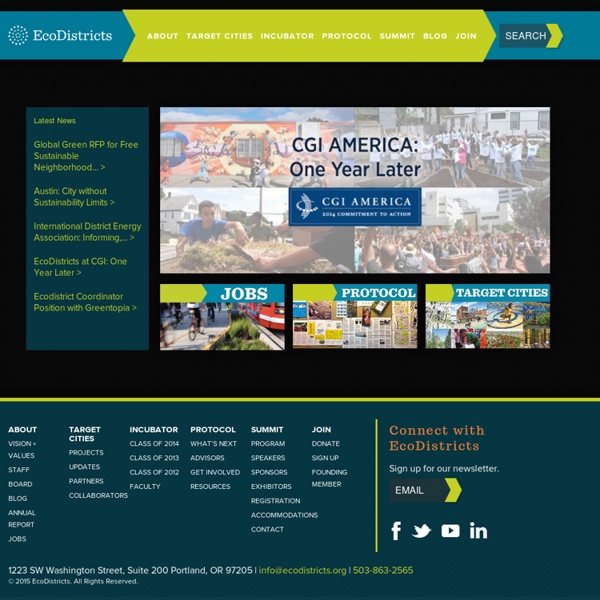



LivingCityBlock Kirkland Green - City of Kirkland Kirkland is known for its green spaces, parks and waterfront. The City is committed – through many “green" initiatives – to preserve, protect and sustain our natural resources. Through a variety of efforts, the City is also addressing sustainable development, green buildings and climate change. Kirkland recognizes the interdependency of our natural resource systems: Water: Our streams, lakes, wetlands, storm water runoff, groundwater and shorelines Land: The soils, vegetation, rocks, geology, and topography Air: Climate change, air quality, microclimates and macroclimate. Keeping It Green: City Initiatives Kirkland's Comprehensive Plan calls for the community vision to have Kirkland be an “attractive, vibrant, inviting place to live and work,” and to provide an “extensive park system and to preserve open space and waterfront trails and vistas.” The City is implementing its green initiatives using a multi-departmental approach. Making It Green: Community Involvement
MEPT Ecodistrict An ecodistrict or eco-district is a neologism associating the terms "district" and "eco" as an abbreviation of ecological. It designates an urban planning aiming to integrate objectives of "sustainable development" and reduce the ecological footprint of the project. This notion insists on the consideration of the whole environmental issues by attributing them ambitious levels of requirements. Examples[edit] Ecodistricts can be found in metropolises such as : Stockholm (Hammarby Sjöstad) (Sweden)Hanover (Germany)Freiburg im Breisgau (Vauban, Freiburg) (Germany)Malmö(BO01) (Sweden)London (BedZED) (United Kingdom)Grenoble (De Bonne and Blanche Monier) (France)Dongtan (China)EVA Lanxmeer (Netherlands)Amersterdam Noord (Netherlands)[1]Jono district low-carbon project (KitaKyushu, Japan)Frequel-Fontarabie (Paris, France)Energy Hub Project— Tweewaters Leuven (Belgium) References[edit] See also[edit]
The Portland Plan About the Portland Plan Developed in response to some of Portland’s most pressing challenges, including income disparities, high unemployment, a low high school graduation rate and environmental concerns, the Portland Plan presents a strategic path forward. This is not your typical plan. The Portland Plan requires us to work smarter, be more practical, partner across jurisdictions and be ready to have difficult conversations. This is how real progress will be made in Portland. So, how is this plan different? Advancing equity is the foundation of the plan. The Portland Plan is also practical, in that it does not assume new money. Several years in the making and reflecting more than 20,000 comments from residents all over the city, the Portland Plan comprises the following elements.
Urban Land Conservancy Architecture and Urbanism Documentary A documentary has been making the rounds recently in urban circles featuring perhaps the most influential architect you’ve (probably) never heard of: Jan Gehl. Aptly called The Human Scale, the documentary features numerous of Gehl Architects’ projects around the world, many of which are included in Gehl’s recent book, Cities for People. I recently had the opportunity to view said documentary and it did not disappoint (see trailer below). The Human Scale I have a tendency to talk a lot about Jan Gehl and Gehl Architects more generally because of their closeness to my personal research but also because of the impact they are currently having globally. Perhaps one of the least practical looking buildings (Guggenheim, Wikipedia Creative Commons) My first encounter with Gehl’s work was in William H. William “Holly” Whyte doing what he did best (Image pps.org) Helle Søholt and Jan Gehl, founders of Gehl Architects (Image source here) Anthropologically this is brilliantly simple. Connect:
Piton Foundation Bicycling Surges Across the US, Outpacing Noisy Critics How the "bikelash" was overcome in New York and other cities A three-wheel taxi driver and pedestrians enjoy the new commons in Times Square thanks to the efforts of New York Transportation Commissioner Janette Sadik-Khan. Two-thirds of New Yorkers call bike lanes a good idea in the most recent New York Times poll, compared to only 27 percent who oppose them. Former New York mayor Ed Koch envisioned bicycles as vehicles for the future, and in 1980 created experimental bike lanes on 6th and 7th Avenues in Manhattan where riders were protected from speeding traffic by asphalt barriers. It was unlike anything most Americans had ever seen—and some people roared their disapproval. Within weeks, the bike lanes were gone. These “green lanes” and pedestrian plazas were an immediate hit but ignited a noisy reaction from a small group of well-connected people unhappy about projects in their neighborhoods, including Bloomberg’s former transportation commissioner. 1. 2.
Foundations Principles of Intelligent Urbanism Principles of Intelligent Urbanism (PIU) is a theory of urban planning composed of a set of ten axioms intended to guide the formulation of city plans and urban designs. They are intended to reconcile and integrate diverse urban planning and management concerns. These axioms include environmental sustainability, heritage conservation, appropriate technology, infrastructure-efficiency, placemaking, "Social Access," transit oriented development, regional integration, human scale, and institutional-integrity. The term was coined by Prof. The PIU evolved from the city planning guidelines formulated by the International Congress of Modern Architecture (CIAM), the urban design approaches developed at Harvard's pioneering Urban Design Department under the leadership of Josep Lluis Sert, and the concerns enunciated by Team Ten. Axioms[edit] Principle one: a balance with nature[edit] Principle two: a balance with tradition[edit] Principle three: appropriate technology[edit]